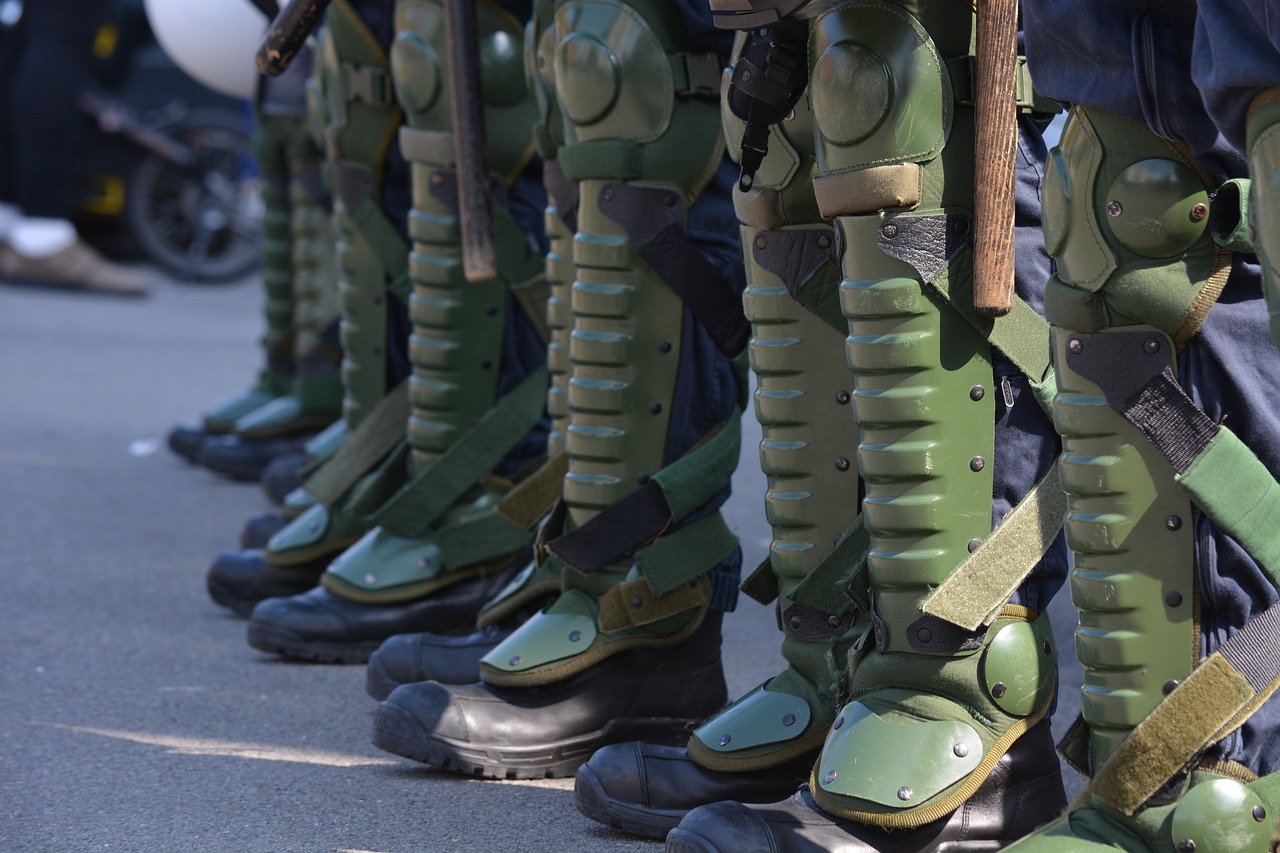
Since 1997, the Pentagon’s Defense Logistics Agency has transferred surplus military equipment worth over $6 billion to more than 8,000 police agencies across the United States, according to official figures. Known as the 1033 Program, it is not without controversy, especially after police used armored vehicles and other military equipment to quell protests following the fatal shooting of an unarmed black teenager in Ferguson, Missouri in 2014.
The equipment includes everything from rifles and helicopters to uniforms and computers. Police departments receive the gear for free, though they are responsible for paying shipping costs. In 2015, after the violence in Ferguson drew national attention, the White House introduced some restrictions on the transfers; the Defense Logistics Agency would no longer give police grenade launchers, tanks or armed aircraft, for example.
Proponents of the transfers say the equipment helps police forces tackle crime. Opponents argue that the militarization of police forces drives a wedge between communities and those vowing to protect them. A new scholarly paper may disappoint the program’s critics.
An academic study worth reading: “Police Officer on the Frontline or a Soldier? The Effect of Police Militarization on Crime,” in American Economic Journal, 2017.
Study summary: Vincenzo Bove of the University of Warwick, in England, and Evelina Gavrilova of the Norwegian School of Economics claim to find a causal relationship, whereby military aid negatively affects crime rates. They follow up with two questions: 1) Is the effect of aid on crime driven by police efforts? 2) What kind of military aid works best to combat crime?
They compare data on 176,000 transfers between 2006 and 2012 with crime and arrest rates in the regions that received the equipment. They also look for any differences between lethal and non-lethal equipment (guns versus computers, for example) and examine the frequency of transfers to each police department. These data, the authors argue, allow them to “disentangle the deterrence effect produced by the display of military equipment from the efficiency effect when the police use military equipment to solve more crime and arrest perpetrators.”
To control for correlations between communities with high crime rates and police requests for military equipment, the authors track how much equipment was available in a given year and how much the military spent on equipment the year before. High military spending (during the war in Afghanistan, for example) leads to increases in gear available to police departments. The authors also test for a number of other factors, such as unemployment rates, poverty rates and median income.
Key takeaways:
- “A 10 percent increase in the total value of military aid [given to a community] leads to a decrease of 5.9 crimes per 100,000 population.”
- The fall is largely in robberies, assaults, burglaries and car thefts. The authors find no association between military aid and homicides.
- Military aid is associated with a fall in local citizens’ complaints about crime.
- The average value of aid acquired by a county is $58,000.
- Based on the average cost of a crime, the authors conduct a cost-benefit analysis that reasons $5,800 worth of military gear can save society about $112,000. Thus, military aid is “a very inexpensive crime-reducing tool” when compared to the costs and benefits of hiring additional police officers.
- They find no relationship between aid and arrests, nor between military aid and police officers wounded.
- Nonlethal equipment, including office supplies and IT hardware, have the largest effect on all types of crime (a reduction of 7 crimes per 100,000 people), suggesting that these transfers help law enforcement agencies improve their efficiency.
- Vehicles and gear (stuff like night-vision goggles) have a slightly smaller negative effect on crime (4.7 and 4.4 per 100,000, respectively).
- Weapons do not have an observable effect on crime.
- An increase in Pentagon spending in a given year is associated with a higher amount of military aid distributed the next.
- The value of military aid the Defense Logistics Agency gave to police departments grew from about $30 million in 2006 to $750 million in 2014.
- The authors encourage future researchers to examine “the possibility that military equipment contributes to overly aggressive approaches by police.”
Helpful resources:
The Defense Logistics Agency’s Law Enforcement Support Office (LESO), which manages the 1033 Program, publishes detailed data on the recipient police departments and the equipment transferred, including dates. Click on “LESO Property Transferred to Participating Agencies” to download the latest Excel spreadsheet. LESO also publishes “Information for Pending Requests, Shipments (Transfers) and Cancellations of Property.”
Other research:
- A 2017 paper in the American Economic Journal found similar results to the study discussed here.
- A 2017 working paper from University of Essex scholar Giovanni Mastrobuoni looks at the effect on crime rates when police forces use information technology.
- The National Bureau of Economic Research looked in 2013 at the effect of police on crime across 50 years.
- Journalist’s Resource has reviewed research on the debate over excessive and reasonable police force.
